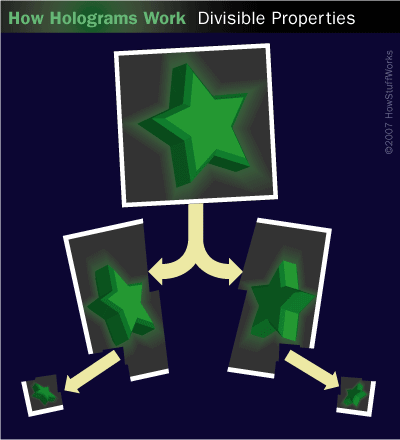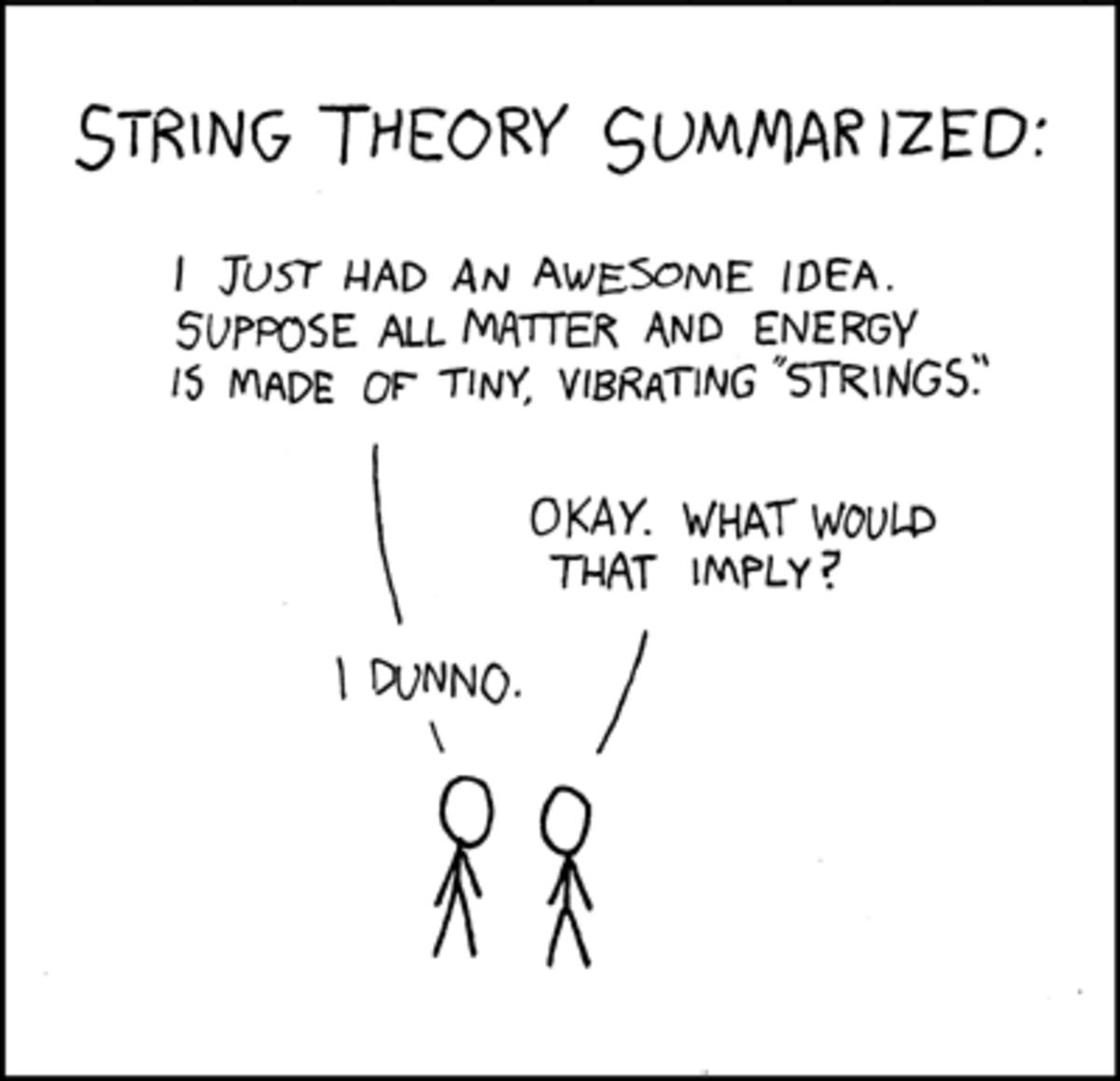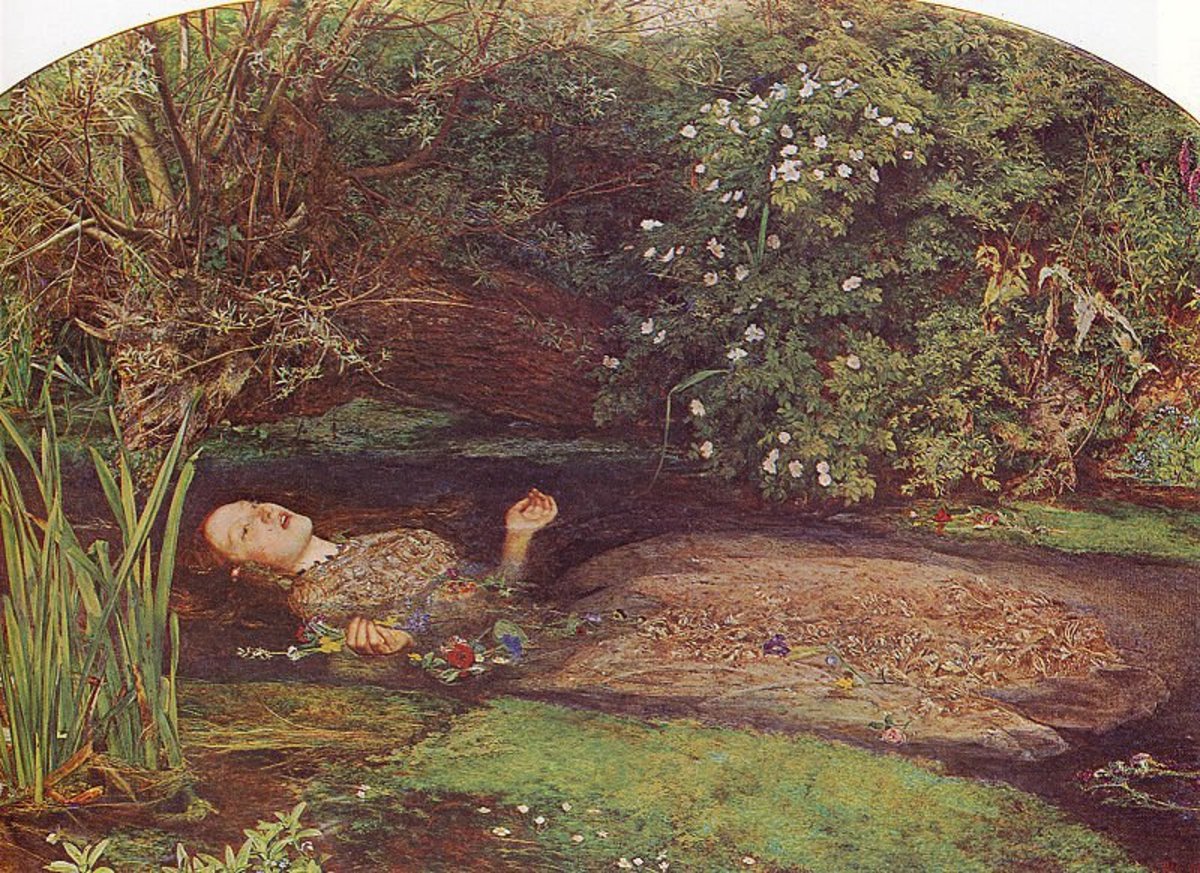What is the Holographic Principle?
Every Where: But No Where

A Piece of the Theory of Everything Puzzle
Holograms: Three-Dimensional Image - A Piece of the Theory of Everything
Holograms are true three-dimensional images. This is evidenced by the fact that you can move your head while viewing the image and see it in a different perspective. This includes revealing part of the image, which was hidden at another viewing angle.
When a piece is the whole
Holograms have other surprising traits as well. Every part of a hologram contains the image of the whole object. You can cut off the corner of a hologram and see the entire image through it. For every viewing angle, you see the image in a different perspective, as you would a real object. Each piece of a hologram contains a particular perspective of the image, but it includes the entire object.
The same is true if you cut out a small piece -- even a tiny fragment will still contain the whole picture. On top of that, if you make a hologram of a magnifying glass, the holographic version will magnify the other objects in the hologram, just like a real one.
A hologram teaches us that some things in the universe may not lend themselves to this approach. If we try to take apart something constructed holographically, we will not get the pieces of which it is made, we will only get smaller wholes.
This insight suggested by physicist David Bohm, from University of London, for example, believes another way of understanding Aspect's discovery. At the University of Paris, a research team led by physicist Alain Aspect performed what may turn out to be one of the most important experiments of the 20th century. Bohm believes the reason subatomic particles are able to remain in contact with one another regardless of the distance separating them is not because they are sending some sort of mysterious signal back and forth, but because their separateness is an illusion. He argues that at some deeper level of reality such particles are not individual entities, but are actually extensions of the same fundamental something.
David Bohm's theory suggest that the universe is like a Hologram. He describes all matter, and everything really, in an implicate order that we cannot perceive. The implicate order is like an interference pattern of energy waves, interacting with itself. He then goes onto say that consciousness receives these waves like a radio antenna receiving radio waves and translates it into the explicit order: The world we normally experience. He uses this theory to provide explanation to miracles and paranormal events, saying that if we just perceived the energy waves of the cosmos in which we can walk on water, then, we could walk on water and perform miracles. He also stated it provides explanation to phenomena such as quantum tunneling and, the one with particles being in two places at the same time.
Plato, the great Greek philosopher, wrote a series of “Dialogues;” one of the most famous of these Dialogues is the “Allegory of the Cave.” In this allegory, people are chained in a cave so that they can only see the shadows, which are cast on the walls of the cave by a fire. To these people, the shadows represent the totality of their existence - it is impossible for them to imagine a reality, which consists of anything other than the fuzzy shadows on the wall. If the prisoners escape from the cave; they may go out into the light of the sun and behold true reality. When they try to go back into the cave and tell the other captives the truth, they are mocked as madmen.
Our “reality” is skewed by our perceptions. We perceive three dimensions and see the apparent “disconnectedness” of objects. Perhaps we do not observe what really is? Perhaps there is a Holographic Principle wherein the individual parts are parts of the whole universe. They are connected. Each an exact replica of the whole universe.
The Holographic Principle was created by the famous Dutch theoretical physicist G. 't Hooft states the information needed to describe any region of space can be contained on its surface.
This implies our Universe might be simpler than it appears. Our entire space is simply redundant. The Principle of Least Action suggests with the right “key” it is possible to derive the laws of physics.
Pieces of the “Theory of Everything” (ToE) Puzzle
Key to the cosmos perhaps may be a combination of a cosmological holographic state integrated with the Information Theory – a key element emerging in the quest to find the holy grail of theoretical physics…
See next installment:
The Theory of Everything Integrating the Information Theory and Cosmological Holographic State:
http://hubpages.com/hub/Artificial-Intelligence-Robo-Scientist
http://hubpages.com/hub/Possible-Relief-from-Multiple-Sclerosis






